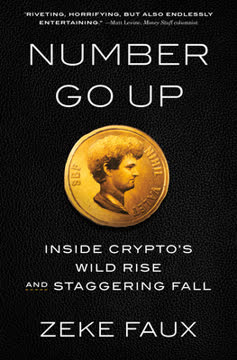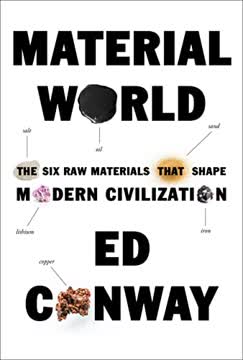نکات کلیدی
1. از آغازهای فروتنانه تا غول جهانی: صعود کارلوس غصن
"بیشارا از طریق ایالات متحده آمده بود، جایی که یک دهه قبلتر به آنجا رسیده بود. پسرانی مانند بیشارا، یک مسیحی مارونی، در آغاز قرن بیستم به صورت گسترده از کشور خود فرستاده شده بودند."
ریشههای مهاجرت. داستان کارلوس غصن با پدربزرگش، بیشارا غصن، آغاز میشود که در سال ۱۹۱۰ از لبنان به برزیل مهاجرت کرد. بیشارا روحیه کارآفرینی را که بعدها کارلوس را تعریف میکرد، در خود داشت و در دوران رونق لاستیک در آمازون کسبوکاری موفق بنا نهاد. این میراث از تطبیقپذیری و جاهطلبی به کارلوس منتقل شد که در سال ۱۹۵۴ در برزیل به دنیا آمد.
تحصیلات و اوایل کار. مسیر غصن به اوج دنیای خودروسازی با برتری تحصیلی و پیشرفت سریع حرفهای مشخص شد:
- تحصیل در مؤسسات معتبر در لبنان و فرانسه
- پیوستن به میشلن در سال ۱۹۷۸ و صعود سریع در مراتب
- در سن ۳۵ سالگی مدیرعامل میشلن آمریکای شمالی شد
- در سال ۱۹۹۶ به عنوان معاون اجرایی به رنو پیوست
پیشینه چندفرهنگی غصن و توانایی او در پیمایش محیطهای متنوع به بزرگترین داراییهای او تبدیل شد و زمینه را برای نقش آیندهاش به عنوان یک رهبر جهانی خودروسازی فراهم کرد.
2. ساخت اتحاد رنو-نیسان: یک همکاری پیشگامانه
"ما امشب شما را در این مکان باشکوه و تاریخی گرد هم آوردهایم تا از صمیم قلب از همه شما برای حمایت، تشویق و غنیسازی اتحاد و رهبران آن تشکر کنیم."
نجات نیسان. در سال ۱۹۹۹، غصن به ژاپن فرستاده شد تا شرکت خودروسازی نیسان را که در حال مبارزه بود، نجات دهد. رویکرد جسورانه او شامل:
- بستن پنج کارخانه و کاهش ۲۱,۰۰۰ شغل
- کاهش تعداد تأمینکنندگان نیسان به نصف
- برچیدن سیستم سنتی کیرتسو از شرکتهای مرتبط
معمار اتحاد. موفقیت غصن در بازگرداندن نیسان به ایجاد اتحاد رنو-نیسان منجر شد، یک همکاری منحصر به فرد در صنعت خودروسازی:
- رنو ۳۶.۸٪ از سهام نیسان را خریداری کرد
- نیسان بعداً ۱۵٪ از سهام رنو را خریداری کرد
- اتحاد به هر دو شرکت اجازه داد تا هویتهای فردی خود را حفظ کنند در حالی که منابع و فناوریها را به اشتراک میگذاشتند
غصن اولین فردی شد که به طور همزمان دو شرکت از فهرست Fortune Global 500 را رهبری کرد و به عنوان مدیرعامل هر دو رنو و نیسان خدمت کرد. چشمانداز او از یک قدرت جهانی خودروسازی به نظر میرسید که در حال تحقق است.
3. قاتل هزینه: کارایی بیرحمانه و تاکتیکهای بازگشت غصن
"برای اولین بار در بسیاری از سالها، شاید دههها، غصن در صندلی راننده نبود؛ سکی بود."
کارایی بیرحمانه. غصن به خاطر رویکرد تهاجمیاش در کاهش هزینهها و بهبود کارایی به لقب "قاتل هزینه" دست یافت:
- در میشلن: بازسازی عملیات در برزیل و آمریکای شمالی
- در رنو: بستن کارخانهها و سادهسازی عملیات
- در نیسان: اجرای برنامه احیای نیسان که شامل کاهش گسترده شغل و بازسازی بود
رهبری مبتنی بر نتایج. سبک رهبری غصن با:
- تعیین اهداف واضح و بلندپروازانه
- مسئولیتپذیری مدیران برای نتایج
- شکستن سیلوها بین بخشها
- اجرای تیمهای چندوظیفهای برای حل مشکلات
روشهای او اغلب بحثبرانگیز بودند اما به طور غیرقابل انکاری مؤثر بودند، شرکتهای در حال مبارزه را بازگرداندند و به او شهرتی به عنوان یکی از موفقترین مدیران اجرایی در صنعت خودروسازی بخشیدند.
4. آفتابپرست فرهنگی: پیمایش در کسبوکار ژاپنی، فرانسوی و جهانی
"مردم آماده همکاری هستند اگر پروژه مشترکی داشته باشند که هویتهایشان را تهدید نکند."
استادی چندفرهنگی. توانایی غصن در پیمایش محیطهای فرهنگی مختلف یکی از عوامل کلیدی موفقیت او بود:
- مسلط به زبانهای عربی، انگلیسی، فرانسوی و پرتغالی
- تطبیق سبک مدیریتی خود با زمینههای فرهنگی مختلف
- احترام به آداب و رسوم محلی در حالی که بهترین شیوههای جهانی را اجرا میکرد
سازنده پل. در اتحاد رنو-نیسان، غصن نقش مهمی در:
- میانجیگری بین فرهنگهای شرکتی فرانسوی و ژاپنی
- ایجاد ساختار منحصر به فرد "اتحاد" که به هویتهای هر دو شرکت احترام میگذاشت
- ترویج تنوع و همکاری بینفرهنگی
با این حال، این تعادل ظریف به طور فزایندهای دشوار شد و در نهایت به سقوط غصن کمک کرد.
5. بهای قدرت: جنجالهای جبران خسارت و طرحهای مالی غصن
"غصن در کنترل خشم خود دچار مشکل شد. خودخواهی اقدامات غصن بیش از همه او را عصبانی کرد."
تعارضات جبران خسارت. با افزایش قدرت غصن، جنجالها پیرامون جبران خسارت او نیز افزایش یافت:
- با انتقاد به عنوان یکی از پردرآمدترین مدیران اجرایی در ژاپن مواجه شد
- به طور ادعایی درآمد خود را برای جلوگیری از واکنش عمومی کمتر گزارش کرد
- متهم به استفاده از منابع شرکت برای منافع شخصی، از جمله املاک لوکس و یک قایق تفریحی
مانورهای مالی. غصن و همکارانش به طور ادعایی در طرحهای مالی پیچیدهای شرکت کردند:
- ایجاد شرکتهای فراساحلی برای مدیریت داراییهای شخصی
- استفاده از مشوقهای فروشنده در عمان برای انتقال پول به حسابهای شخصی
- تلاش برای پنهان کردن جبران خسارت از طریق پرداختهای معوق و گزینههای سهام
این اتهامات در نهایت به دستگیری و سقوط غصن منجر شد و میراث او به عنوان یک رهبر تجاری را لکهدار کرد.
6. سقوط از اوج: دستگیری، زندان و فرار
"من اینجا نیستم تا درباره چگونگی خروج از ژاپن صحبت کنم، من اینجا هستم تا درباره چرایی خروج از ژاپن صحبت کنم."
دستگیری ناگهانی. در ۱۹ نوامبر ۲۰۱۸، غصن در فرودگاه هاندا توکیو به اتهام سوء رفتار مالی دستگیر شد:
- متهم به گزارش نادرست درآمد و سوء استفاده از داراییهای شرکت
- ۱۰۸ روز در بازداشت گذراند، با شرایط سخت و بازجویی شدید مواجه شد
- در مارس ۲۰۱۹ با وثیقه آزاد شد، اما در آوریل دوباره دستگیر شد
فرار جسورانه. در ۲۹ دسامبر ۲۰۱۹، غصن یک فرار دراماتیک از ژاپن را ترتیب داد:
- از محل اقامت خود در توکیو در یک جعبه بزرگ تجهیزات صوتی قاچاق شد
- با یک جت خصوصی به ترکیه و سپس به لبنان پرواز کرد
- فرار با کمک مایکل تیلور، عضو سابق نیروهای ویژه ایالات متحده، برنامهریزی و اجرا شد
فرار غصن تیترهای بینالمللی را به خود اختصاص داد و وضعیت قانونی او را پیچیدهتر کرد و او را به یک فراری از عدالت ژاپن تبدیل کرد.
7. میراث در ویرانی: پیامدهای سقوط غصن
"قرار نبود اینگونه به پایان برسد. غصن قصد داشت در لبنان با شکوه و جلال بازنشسته شود و به عنوان یکی از بزرگترین رهبران تجاری تاریخ به یادگار بماند."
پیامدهای شرکتی. رسوایی غصن پیامدهای گستردهای برای رنو و نیسان داشت:
- اتحاد ضعیف شد و اعتماد بین شرکتها به شدت آسیب دید
- قیمت سهام و سهم بازار هر دو شرکت کاهش یافت
- خلأ رهبری به عدم قطعیت استراتژیک و چالشهای عملیاتی منجر شد
پیامدهای شخصی. غصن و نزدیکانش با پیامدهای شدید مواجه شدند:
- غصن: در لبنان گیر افتاده و به دلیل اعلامیه قرمز اینترپل قادر به سفر نیست
- اعضای خانواده: در تحقیقات دخیل و شهرتشان آسیب دیده
- مایکل تیلور و پسرش: دستگیر و به ژاپن مسترد شده و با احکام زندان مواجه شدند
تأثیر ماندگار. ماجرای غصن سوالات مهمی را مطرح کرد:
- حاکمیت شرکتی و مسئولیتپذیری اجرایی
- تفاوتهای فرهنگی در شیوهها و اخلاق کسبوکار
- آینده اتحادها و همکاریهای جهانی خودروسازی
سقوط غصن به عنوان یک داستان هشداردهنده درباره خطرات قدرت بیمهار و خط باریک بین رهبری بصیرانه و افراط شخصی در دنیای شرکتها عمل میکند.
آخرین بهروزرسانی::
FAQ
What’s Boundless: The Rise, Fall, and Escape of Carlos Ghosn by Nick Kostov about?
- Comprehensive biography: The book traces Carlos Ghosn’s journey from his early years in Lebanon and Brazil to his rise as a global automotive titan, leading Renault, Nissan, and Mitsubishi.
- Business and legal drama: It details his business strategies, the complexities of the Renault-Nissan Alliance, and the dramatic events leading to his arrest and escape from Japanese justice.
- Global and personal impact: The narrative spans continents and cultures, exploring the intersections of corporate power, globalization, and personal ambition.
- Daring escape and aftermath: The story culminates in Ghosn’s audacious escape from Japan and the far-reaching consequences for his life, family, and the automotive industry.
Why should I read Boundless by Nick Kostov?
- Insight into global business: The book offers a rare, detailed look at the inner workings of multinational corporations and the challenges of cross-cultural leadership.
- Thrilling real-life narrative: It reads like a corporate thriller, combining investigative journalism, biography, and business analysis.
- Understanding corporate governance: Readers gain perspective on executive power, financial ethics, and the risks of high-stakes leadership.
- Broader lessons: The story provides valuable lessons on ambition, resilience, and the personal costs of global success.
Who is Carlos Ghosn and why is his story significant in Boundless by Nick Kostov?
- Global automotive leader: Ghosn was celebrated for orchestrating the turnaround of Nissan and leading the Renault-Nissan-Mitsubishi Alliance to become the world’s largest automotive group by sales.
- Controversial downfall: His arrest in Japan on charges of financial misconduct shocked the business world and exposed deep tensions within the Alliance.
- Symbol of globalization: Ghosn’s story highlights the complexities and conflicts of cross-cultural business leadership and the personal costs of power at the highest levels.
- Public fascination: His dramatic escape and subsequent life in exile made him a symbol of both corporate excess and resistance to perceived injustice.
What are the key takeaways from Boundless: The Rise, Fall, and Escape of Carlos Ghosn by Nick Kostov?
- Leadership and ambition: Ghosn’s rise demonstrates the power of vision, relentless work ethic, and the ability to bridge cultures in global business.
- Fragility of alliances: The Renault-Nissan Alliance’s struggles reveal the challenges of maintaining trust and balance in multinational partnerships.
- Corporate governance risks: The book exposes the dangers of opaque compensation, secretive financial arrangements, and weak oversight.
- Justice and cultural conflict: Ghosn’s legal ordeal highlights the stark differences between Western and Japanese justice systems and the risks faced by foreign executives.
How did Carlos Ghosn rise to power according to Boundless by Nick Kostov?
- Self-made roots: Ghosn’s family history of ambition and migration, combined with an elite education at École Polytechnique, set the stage for his global career.
- Turnaround expertise: He earned a reputation as “Le Cost Killer” for his ability to revive struggling companies, first at Michelin, then at Renault, and most famously at Nissan.
- Cross-cultural leadership: Ghosn’s ability to bridge French and Japanese corporate cultures was crucial in forging and leading the Renault-Nissan Alliance.
- Bold decision-making: His willingness to make tough, sometimes unpopular decisions distinguished him as a transformative leader.
How did Carlos Ghosn transform Nissan, as described in Boundless by Nick Kostov?
- Diagnosis and revival plan: Ghosn identified Nissan’s inefficiencies and launched the Nissan Revival Plan, which included plant closures, job cuts, and aggressive cost reductions.
- Cultural adaptation: He worked long hours, engaged directly with employees, and broke down bureaucratic silos, earning respect in Japan.
- Spectacular turnaround: Within a year, Nissan posted record profits, and Ghosn became a national celebrity and symbol of change.
- Hands-on leadership: His direct involvement and willingness to embrace Japanese customs were key to the company’s revival.
What were the main challenges and controversies in managing the Renault-Nissan Alliance, according to Boundless by Nick Kostov?
- Cultural and operational divides: Renault and Nissan remained separate entities with different cultures, languages, and management styles, making collaboration difficult.
- Governance and control issues: The French government’s stake in Renault and laws like the Florange law increased tensions and threatened the alliance’s balance.
- Succession and power struggles: Ghosn struggled to find successors and maintain control, with skepticism from both French and Japanese executives.
- Fragile structure: The alliance was heavily reliant on Ghosn’s personal leadership, making it vulnerable to internal conflicts.
What led to Carlos Ghosn’s arrest and investigation, as detailed in Boundless by Nick Kostov?
- Internal Nissan probe: Executives like Hidetoshi Imazu and lawyer Hari Nada uncovered suspicious financial arrangements, including secret payments and use of company assets.
- Allegations of misconduct: Ghosn was accused of underreporting compensation and misusing company funds for personal benefit, forming the basis of criminal charges.
- Corporate and political tensions: The investigation was intertwined with power struggles within the Alliance and fears of a merger, complicating the legal environment.
- Secretive investigation: The probe was conducted discreetly, with findings passed to Japanese prosecutors, leading to Ghosn’s arrest.
How did Carlos Ghosn manage his compensation and what controversies arose, according to Boundless by Nick Kostov?
- Complex pay structure: Ghosn’s compensation included official salaries and secret remuneration through entities like NMBV, designed to avoid public backlash.
- Secrecy and disclosure issues: He and his associates worked to keep some payments undisclosed, leading to accusations of underreporting income in securities filings.
- Ethical and legal concerns: The secrecy around his pay highlighted weaknesses in executive compensation disclosure and raised questions about transparency.
- Conflict of interest: Creative financial maneuvers, including currency swaps and offshore entities, pushed legal and ethical boundaries.
What was Carlos Ghosn’s experience with the Japanese justice system, as revealed in Boundless by Nick Kostov?
- Harsh detention conditions: Ghosn was held in the Tokyo Detention Center under Japan’s pretrial system, facing prolonged questioning without bail.
- Psychological interrogation tactics: Prosecutors used pressure, splitting charges to extend detention, and limited communication to elicit confessions.
- Challenges for foreign defendants: Ghosn’s case highlighted the difficulties of mounting a defense and the cultural and legal differences faced by non-Japanese suspects.
- International debate: His experience sparked global discussion on fairness, human rights, and the “hostage justice” system in Japan.
How did Carlos Ghosn escape from Japan, according to Boundless by Nick Kostov?
- Security expert involvement: Michael Taylor, a former US Green Beret, was recruited to plan and execute the escape.
- Meticulous planning: The team conducted reconnaissance, secured fake documents, and chartered private jets, devising a cover story involving musicians.
- Daring execution: On December 29, 2019, Ghosn was hidden inside a reinforced music equipment box and transported through Kansai International Airport, bypassing security.
- Successful flight to Lebanon: Ghosn flew via Istanbul to Beirut, evading Japanese authorities and becoming a celebrity fugitive.
What were the consequences of Carlos Ghosn’s downfall and escape for the Renault-Nissan Alliance, as explained in Boundless by Nick Kostov?
- Leadership upheaval: Key executives at both Nissan and Renault were ousted, and new leadership was brought in to restore stability.
- Alliance strain: The partnership became strained, with merger talks stalled and mutual distrust growing between the companies.
- Corporate and reputational damage: The scandal hurt financial performance and public image, turning the Alliance from a model of cooperation into a “hollow shell.”
- Long-term uncertainty: Joint projects were halted, and the future of the Alliance remained in question amid ongoing legal and corporate turmoil.
نقد و بررسی
کتاب بیکران به خاطر روایت جذاب از صعود و سقوط کارلوس گون تحسینهای بسیاری دریافت کرده است. خوانندگان از تصویرسازی متعادل و پژوهششدهی دوران حرفهای گون، از موفقیتهای اولیهاش تا سقوط بحثبرانگیز و فرار دراماتیکش از ژاپن، قدردانی میکنند. این کتاب به خاطر داستانسرایی سریع، تحلیلهای عمیق از فرهنگ شرکتی و بررسی موضوعاتی مانند غرور و طمع مورد ستایش قرار گرفته است. در حالی که برخی بخشهایی از کتاب را تکراری یا بیش از حد جزئی یافتهاند، اکثر منتقدان آن را به عنوان داستانی جذاب در حوزه تجارت با عناصر یک تریلر توصیه میکنند.
Similar Books














